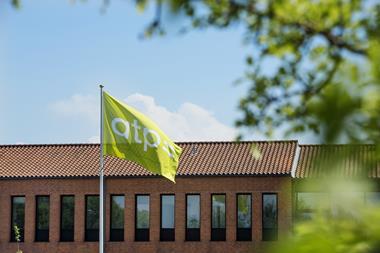DENMARK - Danish occupational pensions provider PenSam reported a 6.8% investment return for the first half of the year, saying high proportions of equities and corporate bonds had boosted the result.
PenSam attributed the “satisfactory” result for pension customers of its PenSam Liv unit - employees included in the collective bargaining agreement of trade union FOA - to its increasingly active investment strategy.
The January to June 2012 returns for PenSam Liv’s two pension products - Tradition and Fleksion - were 7.5% and 6.3%, respectively.
Investment director Benny Buchardt Andersen said: “We have been working with a focus on exploiting the opportunities to invest in corporate bonds.”
European banks were reluctant to lend to the commercial sector, and this meant there were new investment opportunities for PenSam, he said.
“Via external managers, we have increased our investments in funds providing loans to European businesses, and are actively working to find new attractive lending opportunities to Danish companies as well,” he said.
Most recently, this strategy led to an investment in the Carlsberg Byen property project in Copenhagen, in which PenSam teamed up with other institutional investors and Carlsberg to develop the Danish brewer’s old site in the capital city.
Corporate bonds returned 12.7% at PenSam Liv in the first half.
Emerging markets bonds produced 9.1%, and equities ended the period with an 8.9% return.
Investments in infrastructure returned 8.2%.
For the second half, PenSam said it would be looking to see if the crisis in Southern Europe worsened, or if there was enough political will to avoid a collapse of the euro.
It said high government debt in southern Europe would take a long time to fall, and that this would probably keep European growth low for many years.
Monetary policy was therefore expected to remain easy, it added.
“Global growth is weakening because of the crisis in Europe, but it is enough to expect reasonable returns on equities, corporate bonds and property,” said Buchardt Andersen.
For the next six months, PenSam’s strategy would be to keep a high proportion of those asset types, and to avoid investing too one-sidedly because of all the uncertainties, he said.
In other news, Unipension reported first-half investment returns of between 5.4% and 5.9% for the three workplace pension schemes it runs.
The Architects’ Pension Fund (AP) ended the six-month period with an investment return of 5.4%, MP Pension with 5.9% and the Pension Fund for Agricultural Academics and Veterinary Surgeons (PJD) with 5.7%.
The company described the results as “very satisfactory”, given market conditions, which had been extraordinary with problems in Southern Europe and negative yields on government bonds in Denmark and other countries.
A high proportion of shares and corporate bonds had boosted returns for this Danish provider too.
Cristina Lage, managing director at Unipension and the three pension funds, said: “One of the reasons is the pension funds’ good solvency situation, which has made it possible to maintain a high proportion of equities and corporate bonds.”
Equities, which make up more than 30% of asset allocation in each of the three funds, returned more than 10%.
Danish equities alone produced returns of 14.5% for AP and 14.75 for both MP and PJD.
Bond holdings make up 56% of assets in AP, 61% in MP and 62% at PJD.
In the January to June period, these holdings produced returns of 4.6%, 5.3% and 4.5%, respectively.
Gilt-edged bonds ended with a 2.5% return for each of the three funds.
High-yield and emerging market bonds produced returns of 9.4%, 9.5% and 9.4% for the three funds.
The three funds took currency hedging losses of 0.6-0.7% in the period, due in particular to the rise of the US dollar against the Danish crown.
The three funds have allocations to property of 10%, 7% and 1%, and these produced returns of 1.5%, 2.4% and -0.2%, respectively.
Lage said: “The positive development has continued after the first half, so the return has now risen to over 8% for AP and 9% for MP and PJD.”
The return was higher than the strategic benchmark in all areas, she said.












No comments yet